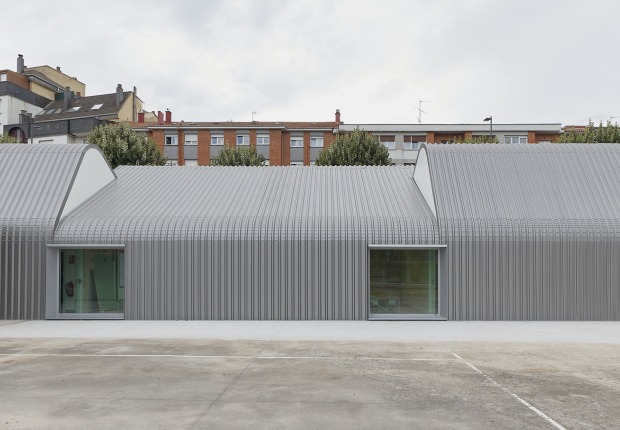
Organised with the support of the Estate of I. M. Pei and Pei Cobb Freed & Partners, which succeeded the architectural firm Pei founded, the exhibition features more than 400 objects, many of them never been exhibited before. These include original drawings, architectural models, photographs, films, and other archival documentation from institutional and private holdings.
The retrospective takes an expanded and detailed look at the architect through six areas: his upbringing; approach to cities; engagement with art; relationship with clients; masterful use of geometry, materials, and structure; as well as deep reflection on the past.
Section 1. Pei’s Cross-Cultural Foundations
Pei’s Cross-Cultural Foundations shows how Pei’s upbringing and architectural education formed the foundation of his ability to reconcile multiple sources of influence across cultures and between tradition and modernity.

Section 2. Real Estate and Urban Redevelopment
Real Estate and Urban Redevelopment unveils a lesser-known phase of Pei’s career as part of real estate developer Webb & Knapp in New York City. It explores his contributions to mixed-use planning, housing, and urban revitalisation projects in the United States in the 1960s, and subsequently beyond American borders.

Section 3. Art and Civic Form
Art and Civic Form introduces Pei’s museum designs and his frequent collaborations with artists from Henry Moore to Zao Wou-Ki. The section demonstrates his belief in museums as civic spaces, the importance of dialogue between art and architecture, and his deep affinity with the contemporary art of his time.

Section 4. Power, Politics, and Patronage
Power, Politics, and Patronage reveal how Pei—with his technical mastery, ingenious problem-solving, and sensitivity to client needs—became a trusted collaborator in high-profile commissions that drew both immense support and public controversy throughout his career.

Section 5. Material and Structural Innovation
Material and Structural Innovation illustrates Pei and his team’s consistent inventiveness in the use of materials and construction methods, especially with concrete, stone, glass, and steel.

Section 6. Reinterpreting History through Design
Reinterpreting History through Design examines Pei’s long-standing interest in making modern architecture relevant to different histories, traditions, and ways of life, particularly those related to his birthplace. Pei distilled the essence of cultural and historical archetypes to provide formal or spatial strategies for contemporary needs.












































































